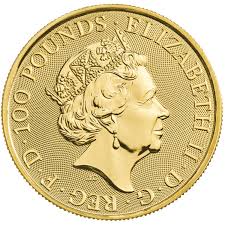By the late 19th century, the global monetary system was undergoing a fundamental transformation. Nations that had long relied on bimetallism or silver-backed currencies increasingly shifted toward the gold standard, following the lead of Britain and Germany. This transition was driven by economic pressures, trade advantages, and the declining value of silver, which made maintaining bimetallic systems increasingly difficult. While the transition stabilized international trade, it also created economic disparities, particularly for nations that continued to rely on silver. This post explores how major European powers—including Britain, France, and other key nations—moved toward gold-backed monetary systems and the lasting consequences of this shift.

1. Britain: The First Major Power to Fully Adopt the Gold Standard
- The Gold Standard Act of 1821
- Britain was the first major economy to fully adopt the gold standard, doing so in 1821 following the Napoleonic Wars.
- The Bank of England committed to redeeming paper currency in gold, making the British pound the first major gold-backed currency in Europe.
- Britain’s decision was driven by financial stability, as gold was seen as less volatile than silver and widely accepted in international trade.
- Global Influence of British Monetary Policy
- As the world’s dominant economic and colonial power, Britain’s adoption of gold set a precedent for other nations.
- The British Empire’s vast trading network reinforced the gold standard’s credibility, making it the preferred system for global commerce.
- Limited Impact on Silver in the 19th Century
- Despite Britain’s early adoption of the gold standard, most European nations retained bimetallism until the late 19th century.
- However, as silver depreciated in value, pressure mounted on other nations to follow Britain’s lead.
2. France and the Latin Monetary Union’s Struggle to Maintain Bimetallism
- France’s Bimetallic System (1803–1870s)
- Under the Monetary Law of 1803, France established a bimetallic standard with a fixed silver-to-gold ratio of 15.5:1.
- This system remained stable for decades, allowing both silver and gold to circulate.
- The Latin Monetary Union (1865–1926)
- In 1865, France, Belgium, Italy, and Switzerland formed the Latin Monetary Union (LMU) to standardize coinage and maintain bimetallism.
- The LMU aimed to preserve silver’s monetary role while accommodating the rising use of gold.
- The Collapse of Bimetallism and France’s Shift to Gold
- The Franco-Prussian War (1870–1871) weakened France’s economy, and the flood of German silver into European markets made maintaining the 15.5:1 silver-to-gold ratio impossible.
- France unofficially began favoring gold in the 1870s, though the LMU formally remained bimetallic.
- By the 1890s, France and the LMU nations effectively abandoned silver and transitioned to a gold-dominated monetary system.
3. Germany’s Role in Accelerating the Gold Standard
- The Franco-Prussian War and German Unification (1871)
- Germany’s victory over France resulted in 5 billion francs in gold reparations, enabling Germany to build up substantial gold reserves.
- In 1871, Germany abandoned silver and adopted the gold standard, demonetizing silver coins and causing a flood of silver into global markets.
- Impact on Other European Nations
- The devaluation of silver made it difficult for bimetallic nations to maintain stable exchange rates.
- Germany’s shift pressured other European powers to abandon silver and align with gold.
4. The Final Wave: The Rest of Europe Joins the Gold Standard
- The Scandinavian Monetary Union (1873–1875)
- Denmark, Sweden, and Norway formed the Scandinavian Monetary Union, replacing their silver-based systems with a gold-backed currency.
- This shift strengthened regional trade and integrated their economies with the broader European gold standard.
- The Netherlands, Austria-Hungary, and Russia (Late 19th Century)
- The Netherlands transitioned to gold in the 1870s, following Germany’s lead.
- Austria-Hungary (1892) and Russia (1897) formally adopted the gold standard, completing Europe’s shift away from silver.
5. The Global Impact of Europe’s Shift to Gold
- The Collapse of Silver’s Monetary Role
- As European nations demonetized silver, the global silver market collapsed, severely impacting silver-backed economies such as China, India, and Latin America.
- Silver lost its status as a primary monetary metal, forcing nations still using it to deal with deflation and economic instability.
- Standardization of Global Trade
- With most major economies on the gold standard, international trade became more predictable and stable.
- Exchange rates were fixed to gold, reducing currency fluctuations and increasing investor confidence.
- Increased Economic Divisions
- Industrialized gold-standard nations (Europe, U.S., Japan) had stronger economic stability, while silver-standard nations (China, India, Latin America) faced monetary instability and trade disadvantages.
Conclusion: The Triumph of the Gold Standard
By the end of the 19th century, most major economies had transitioned to gold, marking the end of the silver era in global finance. Britain’s early adoption, Germany’s post-war reforms, and France’s struggles with bimetallism all contributed to this monumental shift. While the gold standard provided monetary stability, it also created economic imbalances, particularly for nations that still relied on silver.
